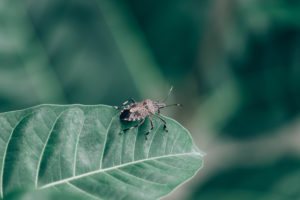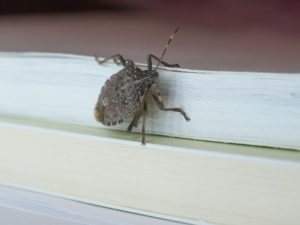People have similar reactions when it comes to stumbling across a bug in their home.
It often comes in the form of…
“Oh no, what is that?!”
Your quick response would be to kill this bug as quickly as possible, but oftentimes properly identifying this small home invader can be the key to discovering whether you might have an infestation.
If you’re unfamiliar with either bed bugs or stink bugs, it’s understandable to suspect either of them as the culprit.
But recognition is key because both of these bugs can be a nightmare to deal with if not addressed properly.
Page Contents:
Key Differences between Stink Bugs and Bed Bugs
Here are a few ways to tell the difference between these household pests:
1. Physical Appearance
Luckily, to the untrained eye, stink bugs and bed bugs are not too difficult to tell apart.
Both species have 6 legs, antennae, and an oval-shaped body.
Fortunately… The similarities end there.
Stink bugs are significantly larger than bed bugs, around 17mm to just 5mm.
(That’s more than three times as large)!
Stink bugs have a distinct gray color, think the color of dead leaves. Whereas bed bugs have a warm, reddish-brown tone.

In addition to their physical traits, bed bugs are only active during the nighttime, but stink bugs are known to be active during all hours of the day.
Diet
Bed bugs specifically enter homes to get easy access to their food supply, human blood. They tend to congregate on furniture and other areas that are close to their food source.
On the other hand, stink bugs eat mostly plant matter.
(Though a small handful of stink bug species are known to also prey on other insects and larvae).
Their Relationship with Humans
While bed bugs depend on humans for survival, stink bugs prefer to have nothing to do with them and, biologically, have no need for them.
However, they do seem to still enjoy invading people’s homes.
If you find multiple stink bugs in your home, they’re most likely just looking for a warm, safe place to hibernate through the winter.
Stink bugs typically congregate in places with less foot traffic, like a corner of the basement or attic. These creatures like to be undisturbed and consider unwelcome intrusion as an act of aggression.
A perceived threat causes stink bugs to release the strong odor for which they are named as a defense mechanism.
For the most part, stink bugs will not cause any harm to you physically, but some individuals are allergic to them and their odor.
This manifests itself through typical allergic reaction symptoms.
Can Stink Bugs Be Mistaken for Bed Bugs?
Since large amounts of bed bugs can produce a smell similar to stink bug odor, it’s possible to mistakenly think you have one species of insect when it’s really the other.
However, if you’re able to get a look at one and you’re familiar with the species’ characteristics, you’ll easily make the correct identification.
If you come across any strange smells in your home, you may want to undergo a pest investigation.

Keep in mind that you want to be absolutely sure of the smell’s diagnosis before starting any treatment.
How to Get Rid of Stink Bugs
If you positively identify a stink bug infestation in your home, you should take the necessary steps to get rid of them. However, getting rid of stink bugs or handling them in any capacity can be challenging due to their odor-release response.
Keep in mind that there are multiple natural pesticides that are effective against stink bugs.
For example:
A solution of garlic powder and water (2 cups water with 4 tsp powder) or neem oil and water (1 liter of water and 2 tsp of oil) can be sprayed on the sites where stink bugs are congregating and repel them.
Because stink bugs are attracted to light, you can also hang a night light over a bowl of soapy water and these bugs will fall in and drown, making them safe to remove.
Fly tape is also a cheap, hassle-free effective trap against stink bugs.
How to Get Rid of Bed Bugs
While stink bugs are more finicky, bed bugs are more persistent and stubborn. Similarly to stink bugs, you can use essential oil or alcoholic solutions against bed bugs, as well as bed bug sprays, or other industrial chemical pesticides.
While using such methods will definitely kill bed bugs, it is highly recommended to use professional pest control services to rid your home of a bed bug infestation.
Because these bugs are so small, it’s not too hard for a few of them to escape your efforts to eradicate, leaving you to deal with a re-occurrence of the infestation 2 to 3 months later.




